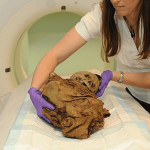 Technology
Technology  Technology
Technology  Our World
Our World 10 Ways Icelandic Culture Makes Other Countries Look Boring
 Misconceptions
Misconceptions 10 Common Misconceptions About the Victorian Era
 Mysteries
Mysteries 10 Strange Unexplained Mysteries of 2025
 Miscellaneous
Miscellaneous 10 of History’s Most Bell-Ringing Finishing Moves
 History
History 10 Great Escapes That Ended Right Back in Captivity
 Weird Stuff
Weird Stuff 10 Fascinating Things You Might Not Know About Spiders
 Food
Food 10 Everyday Foods You Didn’t Know Were Invented by the U.S. Military
 History
History 10 Odd Things Colonial Americans Kept at Home
 Weird Stuff
Weird Stuff 10 Superstitious Beliefs That Once Consumed Entire Cultures
 Technology
Technology 10 Scientific Breakthroughs of 2025 That’ll Change Everything
 Our World
Our World 10 Ways Icelandic Culture Makes Other Countries Look Boring
 Misconceptions
Misconceptions 10 Common Misconceptions About the Victorian Era
Who's Behind Listverse?

Jamie Frater
Head Editor
Jamie founded Listverse due to an insatiable desire to share fascinating, obscure, and bizarre facts. He has been a guest speaker on numerous national radio and television stations and is a five time published author.
More About Us Mysteries
Mysteries 10 Strange Unexplained Mysteries of 2025
 Miscellaneous
Miscellaneous 10 of History’s Most Bell-Ringing Finishing Moves
 History
History 10 Great Escapes That Ended Right Back in Captivity
 Weird Stuff
Weird Stuff 10 Fascinating Things You Might Not Know About Spiders
 Food
Food 10 Everyday Foods You Didn’t Know Were Invented by the U.S. Military
 History
History 10 Odd Things Colonial Americans Kept at Home
 Weird Stuff
Weird Stuff 10 Superstitious Beliefs That Once Consumed Entire Cultures
10 Tantalizing Stories About Money
In the early 21st century, money has become such a fundamental part of everyone’s life. Even though we’re moving more and more to electronic transactions and digital currencies, stories about money in all of its forms, including bills and coins, still thrill and fascinate us. In 1987, one of the most popular films about money, Wall Street, gave us the catchphrase “greed is good.”
Then, in 2011, Margin Call told the captivating story of a fictional Wall Street investment bank that was part of the very real 2008 global financial crisis. In 2015, The Big Short completed the money movie trifecta by telling a different story based on the same crisis. It showed the inner workings of Wall Street that led to the collapse.
In this list, we’ll examine ten stories about money that reveal surprising mistakes, hidden international relationships, and shocking schemes that have changed how we think about currency and power. These are some of the most tantalizing stories about money, from quiet errors that created impossible fortunes to deliberate plots that shook governments. Each story reminds us that money is never just money; it’s also power, mystery, and, sometimes, pure chaos.
Related: 10 Worthless Items Sold for an Insane Amount of Money
10 The Japanese Yen and the Himalayan Shrub
Japan’s use of currency dates back to the 8th century when it introduced its first coins. The yen became the official Japanese currency in 1871. One of its most recognizable denominations is the 1,000 yen note, which features Shibusawa Eiichi, often referred to as the “father of Japanese capitalism.” He worked to modernize Japan’s economy during the Meiji era, from 1868 to 1912.
In 2024, Japan released a redesigned ¥1,000 note featuring a new portrait of Shibusawa and an image of Tokyo Station. It features enhanced watermarks, microprinting, and the world’s first 3D holographic portrait on a Japanese banknote, positioned in the upper-left corner. The bill stands out for its distinctive brown color, advanced technology, and the unusual paper used to make it, which is sourced from the Himalayan foothills of Nepal.
The paper’s key ingredient is a flowering shrub known as paperbush, called argeli in Nepal. For generations, communities in eastern Nepal have harvested its bark to make paper by hand. Japan’s National Printing Bureau values argeli for its strength and texture, importing it for use in yen notes. This partnership has quietly lasted for decades.
For many in Nepal, the harvest not only provides income but also brings cultural pride. Families in remote villages climb steep slopes to gather the bark, which is dried, bundled, and shipped. The relationship is so important that Japan sends experts to help cooperatives maintain quality and sustainability.
Most people who use Japanese currency have no idea a Himalayan shrub is part of its creation. Even in a digital world, money is still physical. It’s shaped by nature, tradition, and human hands.[1]
9 The $81 Trillion Nearly Fatal Typo That Almost Brought Down a Global Bank
In April of 2024, an employee of Citigroup, the third-largest bank in the United States, attempted to deposit $8 into a customer’s account in Brazil. However, the employee made a colossal error by leaving a pre-filled field containing fifteen zeroes untouched. Instead of sending $8, the system credited the customer’s account with eighty-one trillion dollars.
The mistake went unnoticed by two employees who reviewed the transaction. For several hours, the customer’s account appeared to contain more money than the combined economies of most nations in the world. It was not until a third employee caught the error that Citigroup intervened and corrected the balance. Fortunately, the money had not left the bank’s internal systems.
Even though no funds were lost, the seriousness of the mistake required Citigroup to notify both the Federal Reserve and the Office of the Comptroller of the Currency. The bank later admitted to ten major near-miss incidents in 2024 alone, each involving at least $1 billion. None, however, came close to the scale of this one.
For a brief period, a regular account holder was the wealthiest human being in world history. This incident showed that even though the global economy is worth trillions of dollars, there are still technological weaknesses that can allow enormous errors like this one to happen.[2]
8 North Korea’s Perfect Counterfeit Money
In the early 1990s, the United States began to quietly discover something deeply troubling. High-quality counterfeit $100 bills were appearing across the country and around the world. Unlike easily recognizable fakes, typically made by amateur criminals, these were nearly flawless reproductions, so convincing that even experienced bankers and financial institutions had difficulty detecting them. Investigators and currency experts began calling them “supernotes.”
After careful analysis, suspicion shifted to an unexpected source. Intelligence agencies concluded that the counterfeits were likely being produced by the North Korean government. The regime, desperate for foreign currency and locked out of the global economy, had both the motive and, apparently, the means. The bills were made using the same type of cotton-linen paper blend as real U.S. currency. They were printed using intaglio presses, which give printed money its unique texture. The supernotes even included security threads and watermarks that mimicked the real thing.
American officials traced the operation to an elite North Korean division known as Office 39. This secretive agency is believed to be responsible for generating foreign currency through illegal methods, including drug trafficking, arms deals, and counterfeiting. The supernotes were laundered through global networks, including foreign banks, black-market exchanges, and casinos. The counterfeit bills even surfaced in diplomatic circles and military operations.
The U.S. government eventually redesigned the $100 bill to include new and more advanced security features. This helped to slow the spread of the supernotes. Still, by then, millions of dollars in counterfeit bills had already circulated through the global financial system.
To this day, North Korea denies any involvement. However, no other suspect has ever been identified. The extreme precision of the supernotes and the fact that such a poor and isolated country could produce them remains one of the most intriguing financial mysteries in modern history.[3]
7 The Nazi Plot to Destroy the British Economy with Counterfeit Pounds
During World War II, Adolf Hitler approved a bold plan to destabilize Britain’s financial system by flooding the country with fake currency. The scheme, known as Operation Bernhard, aimed to produce massive amounts of counterfeit £5, £10, £20, and £50 notes to trigger inflation, erode trust in the pound sterling, and throw the British economy into chaos.
The operation was based in the Sachsenhausen concentration camp, where Jewish prisoners with backgrounds in engraving, printing, and banking were forced to work. They produced counterfeit notes so convincing that even the Bank of England struggled to tell them apart from the real ones. The forgeries were printed on linen-based paper, embedded with security threads. They carried serial numbers copied from genuine notes already in circulation.
The original plan was to drop the forged pounds over Britain from airplanes, but that part of the operation was never carried out. Instead, the Nazis laundered the fake money through Swiss banks and used it to fund espionage, bribe informants, and buy goods on the black market. By the end of the war, they had printed more than £13 million in fake notes, a sum that would be worth billions today.
After the war, the Bank of England took the extraordinary step of withdrawing all notes above £5 from circulation, and this measure stayed in place until 1964. Operation Bernhard remains one of history’s most audacious acts of financial sabotage, a timeless reminder that even money can be turned into a weapon of war.[4]
6 The Secret Cash Flight to Iran
In January 2016, a U.S. cargo plane landed in Tehran, Iran, carrying $400 million in shrink-wrapped bundles of foreign currency. The shipment included euros, Swiss francs, and other European banknotes obtained through central banks in the Netherlands and Switzerland. U.S. sanctions at the time barred dollar transactions with Iran, so the money was physically delivered to avoid violating those restrictions.
The cash came from a trust account that had been frozen since 1979 when Iran paid the United States for military equipment it never received after the revolution. After nearly forty years of arbitration in The Hague, the Obama administration agreed to return the funds, along with $1.3 billion in interest.
The timing of the transaction caused an immediate controversy. The cash arrived just as Iran had released four American prisoners. Critics said that the huge payment looked like a ransom. The Obama administration denied that accusation, claiming the payment and the release were negotiated separately. However, officials admitted the money was withheld until the prisoners were safely in the air.
The rest of the $1.7 billion was delivered using the same method. The operation remained secret until months later, when news reports and video footage revealed the pallets of cash. In a world increasingly focused on digital currencies like Bitcoin, this episode demonstrated that physical money still plays a significant role in international affairs.[5]
5 The Vatican’s Financial Scandals
When Pope Francis took office in 2013, he promised to bring transparency to the Vatican’s troubled finances. For decades, the Vatican Bank had been linked to secrecy, corruption, and scandal. Hoping to clean house, Francis appointed Libero Milone as the first auditor general in Vatican history. Milone began uncovering irregularities, but he was suddenly forced out in 2017 after being accused of spying. No evidence was ever presented, and no charges were filed.
Another key figure was Cardinal George Pell, who discovered nearly 1.4 billion euros hidden from the official ledgers. He tried to centralize Vatican finances and bring independent oversight, but the internal resistance he faced was overwhelming. Like Milone, Pell was eventually pushed aside. Although he was later cleared of unrelated charges, the financial reform effort had lost its momentum.
One of the most serious scandals involved a failed real estate deal in London. Vatican officials used donations intended for charity to invest in luxury property, losing over $100 million in the process. Cardinal Angelo Becciu, a close adviser to the Pope, was charged with embezzlement and abuse of office. The case pulled back the curtain on a deeply flawed system that had operated in secrecy for decades.
Pope Francis later admitted that change was much harder than he had expected. Reformers were removed, audits were blocked, and corrupt practices continued. The Vatican controls billions of dollars in global assets, yet it still refuses to operate with the transparency expected of modern institutions. Not even the Pope could bring full accountability to one of the most secretive financial systems in the world.[6]
4 America’s Secret Plan to Sabotage Nazi Money
As we learned earlier in this list in Item 7, the Nazis tried to destroy Britain’s economy with counterfeit pounds. In response, the United States launched Operation Cornflakes, a secret effort to undermine Nazi Germany using forged stamps, propaganda, and counterfeit currency. The plan was designed by the U.S. Office of Strategic Services and carried out in the final months of World War II.
American planes bombed German mail trains and then dropped bags of fake letters near the wreckage. Each letter included anti-Nazi pamphlets and a forged five Reichsmark stamp. Postal workers, unaware of the deception, delivered thousands of these letters to German homes. The stamps were convincing enough to pass inspection, and the leaflets inside revealed Nazi war crimes, encouraged resistance, and mocked the regime.
Officials also printed counterfeit Reichsmarks but ultimately chose not to release them, fearing long-term damage to postwar recovery. Even without the fake currency, Operation Cornflakes succeeded in using the enemy’s own mail system to spread doubt and resistance across Nazi Germany. It was a quiet but powerful act of psychological and financial warfare.[7]
3 The Secret U.S. Vault That Holds the World’s Gold
Tucked away in the hills of Kentucky, just outside the town of Fort Knox, sits one of the most mysterious and heavily guarded buildings in the United States. The United States Bullion Depository, more commonly known as Fort Knox, holds a massive stockpile of gold bullion, reportedly exceeding 147 million troy ounces or nearly 4,600 metric tons. At current prices, that is more than $300 billion worth of gold.
The facility was built in 1936 during the Great Depression, partly to secure America’s growing gold reserves and to reassure the public that the U.S. dollar was still backed by a tangible asset. Its walls are made of granite-lined concrete and reinforced steel, and its vault is sealed behind a 22-ton door that can only be opened by multiple people using separate combinations. No single person knows all of them.
Fort Knox’s reputation has made it a symbol of absolute security, but it has also sparked widespread speculation. Some conspiracy theorists have long claimed that the vault is empty or contains far less gold than reported. The U.S. government rarely allows anyone to see inside. In fact, for over four decades, no member of the public was allowed to enter. That changed in 2017 when the Treasury Secretary and several members of Congress visited the site and confirmed that the gold was indeed there. Still, no independent audit has ever been made public.
Though no longer tied to the dollar, gold still symbolizes trust, and the secrecy around Fort Knox keeps it one of the most intriguing stories about money.[8]
2 The Pentagon’s Persistent Accounting Problems
On September 10, 2001, Secretary of Defense Donald Rumsfeld acknowledged a major problem. The Department of Defense’s financial systems were so outdated and disorganized that it could not properly account for $2.3 trillion in past transactions. This figure did not represent stolen or missing money but rather transactions that lacked the necessary documentation to verify their authenticity. It was a sign of serious internal dysfunction.
The next day, the terrorist attacks of September 11 struck the Pentagon, and Rumsfeld’s announcement received little public attention. Some have claimed that the offices hit by the plane were involved in investigating accounting issues. Still, there is no credible evidence to suggest that this was anything more than a tragic coincidence.
More than twenty years later, the Department of Defense still has not passed a full audit. Even with modern bookkeeping systems, recent reviews continue to uncover serious weaknesses. Some estimates suggest that trillions of dollars in transactions remain improperly documented.
The situation has fueled a variety of conspiracy theories. But even those who reject such ideas agree that the lack of transparency is troubling. For an institution that receives more than $800 billion a year, the ongoing failure to track its finances raises serious concerns about oversight, accountability, and national priorities.[9]
1 The Disappearance of One Billion Dollars from Moldova
In 2014, the small Eastern European country of Moldova faced a financial catastrophe. In a matter of days, one billion dollars disappeared from its national banking system. This missing money equated to approximately twelve percent of the country’s entire gross domestic product. The funds were channeled through three major banks into a network of shell companies, offshore accounts, and fraudulent loans. The theft sparked public protests, a currency collapse, and a deep crisis of confidence in the government.
An international audit subsequently traced the scheme back to a small group of insiders who appeared to have operated with the protection of political influence. By the time investigators understood the full extent of the operation, the money had already been moved across so many borders that it became nearly impossible to recover. The Moldovan government quietly bailed out the banks, thereby pushing the cost of the crime onto the country’s taxpayers.
The man believed to be the mastermind, Ilan Shor, was convicted in court but escaped the country before serving his sentence. He later resurfaced as a powerful and controversial political figure. Today, most of the missing money remains unaccounted for. For Moldova, the scandal wasn’t just a financial disaster; it was a national trauma that revealed how easily the global financial system can be manipulated by those who know how to hide money in plain sight.[10]








